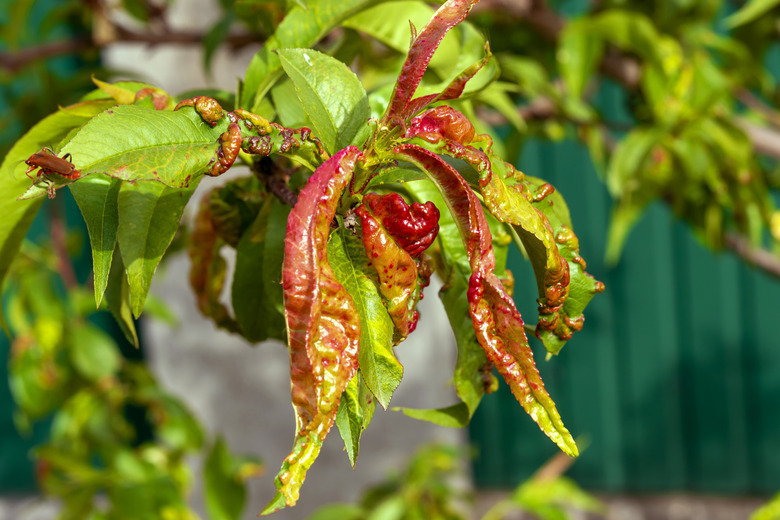How To Treat Fungus On A Tree
We may receive a commission on purchases made from links.
Trees are an important part of any landscape. Often troublesome and sometimes deadly, tree fungus complicates the life of many gardeners and arborists. But tree fungus can be managed, and it's important to take action to save the tree. Armed with some common gardening tools, a little fungicide, and a good schedule of maintenance, any gardener can keep tree fungus at bay.
Warning
Be especially cautious when dealing with trees in the rose family, such as the crabapple tree. Fungi that infect trees in the rose family can also infect roses and lead to garden disease.
How to Manage Tree Fungus
1. Provide a Well-Drained Location
Choose carefully a location for planting or transplanting your tree to ensure a well-drained environment. Boggy or swampy locations breed fungi and make your tree more susceptible to infection. Large trees might be too large to move, in which case fungicide treatment becomes essential.
2. Fertilize the Tree Regularly
Establish a feeding schedule. A well-fed tree is a healthy tree. Fertilizers come in many varieties, including granular, liquid, organic, and chemical. Choose the fertilizer that best suits your type of tree, and feed according to the schedule on the packaging. This helps your tree maintain better disease resistance, and provides a less stressful environment.
3. Prevent Drought Stress
Using your garden hose, water your tree during drought periods. Trees can require about 15 gallons of water per week, but this depends on their age and size. For newly planted trees, water them daily. If you are experiencing a drought, supply the tree with adequate water.
4. Identify Fungal Infection
Determine what type of fungal infection your tree has contracted. Fungi are classified in the following four categories: Vascular wilt, foliar/shoot, root and butt rot, and canker. A vascular type fungus blocks nutrients from reaching the tree. Symptoms include early leaf drop and wilting.
Foliar/shoot type fungus is the most common type of tree fungus. It affects the leaves, leaving spots, and causing mostly aesthetic damage. Root and butt rots kill the roots and trunk of a tree. This type of fungus is mostly asymptomatic until the tree is beyond saving. Canker-type fungal infections typically happen when a branch is pruned and the stub is left untreated. It leaves a sunken appearance to the surrounding bark.
5. Prune Out Fungus
Remove any broken, dead, or diseased branches from the tree. Treat any cut stub with fungicide. Clean your pruning tools with hot, soapy water or dip them into fungicide and then rinse them clean. This will help keep the fungus from spreading to other trees. Move any tree debris away from other healthy trees and burn it or dispose of it where other trees will not be harmed.
6. Use Fungicide on the Infected Tree
Treat the tree with fungicide. Choose a fungicide that treats the type of fungal infection in your tree. Read the directions carefully because some fungicides are applied to the leaves and branches, while others are watered into the roots. Be sure to use protective gear such as gloves and eyewear when handling fungicide.
Continue to follow the treatment schedule detailed on the package. Skipping a treatment could allow the fungus to regrow, negating all the work you have done.
